CFHS Students “Bridge” Classroom Learning to Real-World Engineering in Live Virtual Lab
Catalina Foothills High School students in Ms. Viktoriya Yurkiv’s Physics: Applications of Biotechnology class turned popsicle sticks, wood dowels, and the engineering design process into a morning of real-world problem solving during an Engineering Tomorrow LiveLab on bridge design held in the House 1 Seminar room.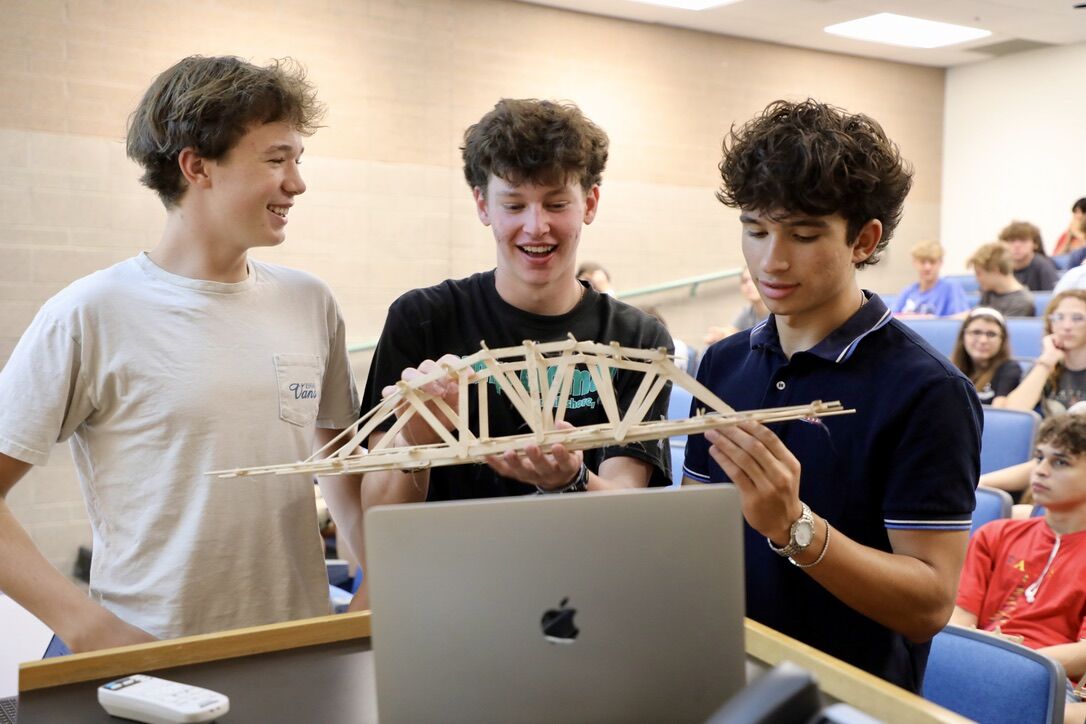
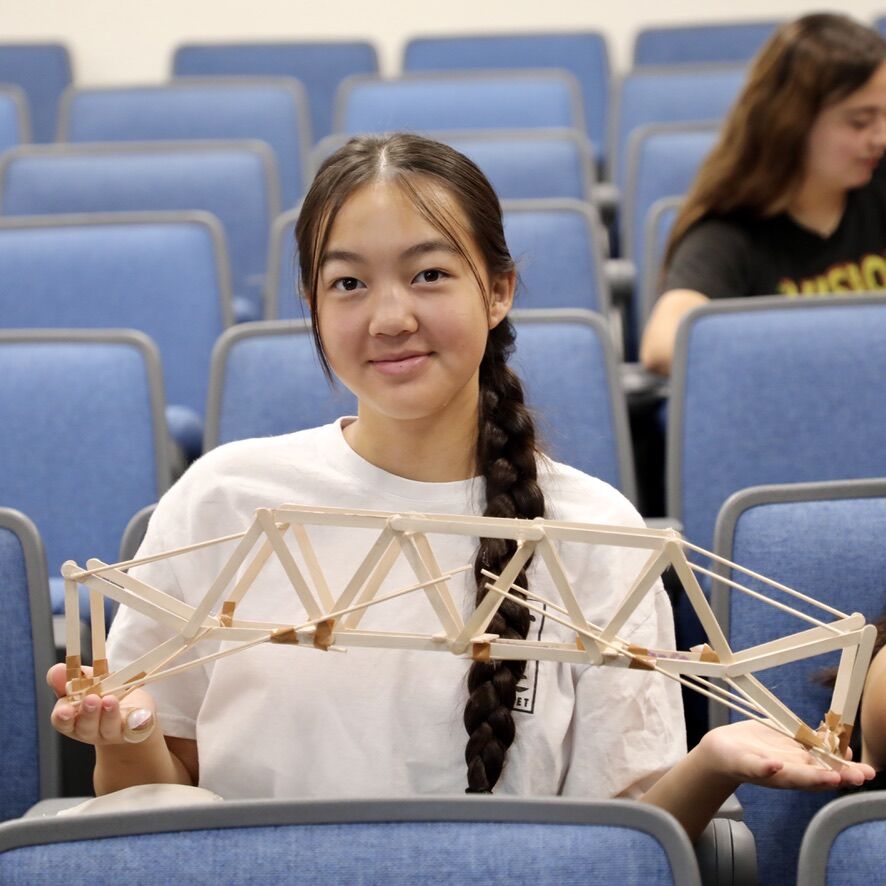 Over three class days leading up to the event, teams identified the challenge they were solving, researched common bridge types and materials, drafted scale sketches within defined constraints, and built first-round prototypes. Students then tested their models by placing them across two tables set 18 inches apart and gradually loading weight—often a shopping bag filled with small items—until failure, recording maximum load, deflection, and failure mode in their workbooks. After analyzing what happened and why, teams planned specific changes to strengthen their designs for a second round. The laboratory parameters mirrored authentic engineering constraints: bridges had to be at least 20 inches long, no more than 4.5 inches wide, and could be any height, using materials from home or the Engineering Tomorrow toolkit.
Over three class days leading up to the event, teams identified the challenge they were solving, researched common bridge types and materials, drafted scale sketches within defined constraints, and built first-round prototypes. Students then tested their models by placing them across two tables set 18 inches apart and gradually loading weight—often a shopping bag filled with small items—until failure, recording maximum load, deflection, and failure mode in their workbooks. After analyzing what happened and why, teams planned specific changes to strengthen their designs for a second round. The laboratory parameters mirrored authentic engineering constraints: bridges had to be at least 20 inches long, no more than 4.5 inches wide, and could be any height, using materials from home or the Engineering Tomorrow toolkit.
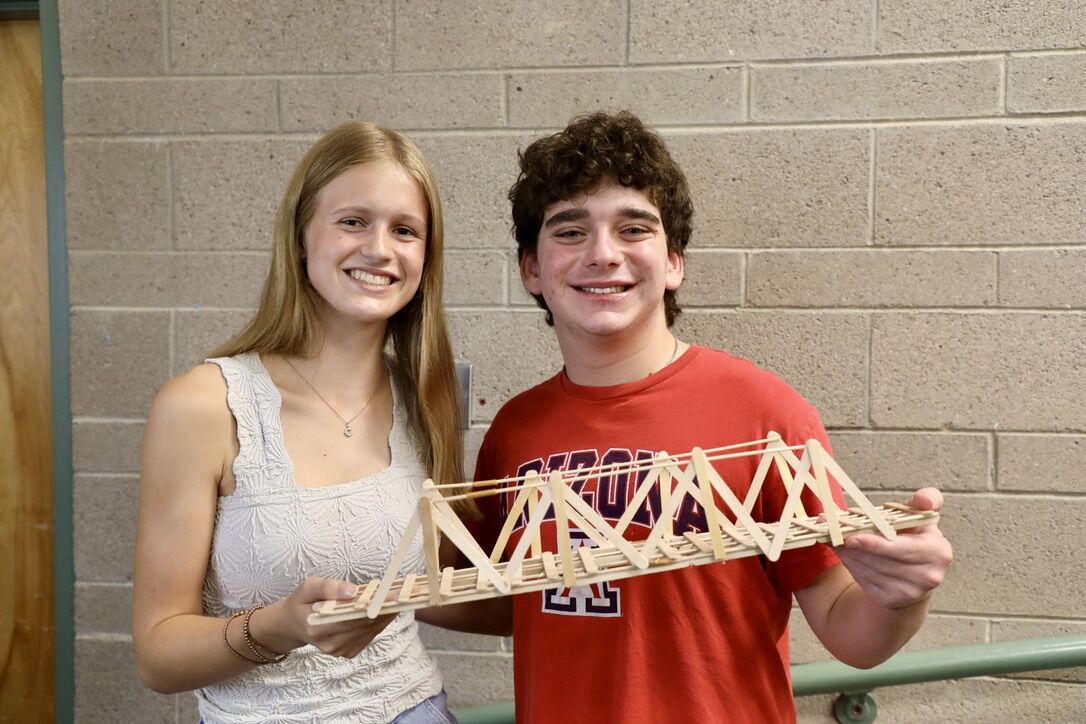 During the LiveLab, students attended a national keynote, “What if a bridge could change everything?”, which illustrated how simple footbridges reconnect rural communities to schools, healthcare, and jobs. Immediately afterward, they entered a live critique with Engineering Tomorrow professionals. The session was led by staff engineer Gerry Dawes and mentor Sinahy Fragoso-De la Paz, who invited teams to bring their bridges to the camera, describe their construction strategies, and reflect on the challenges and solutions they encountered. Students discussed symmetry, torsion, moment of inertia, attachment points, and load paths. At the same time, the engineers offered practical, design-level feedback—reinforcing the bases, tying the sides to the deck, adding top chords, and using triangles to control bending and twisting. The conversation returned repeatedly to iteration. Teams summarized what went well, identified what they would change, and confirmed whether they had begun a second build.
During the LiveLab, students attended a national keynote, “What if a bridge could change everything?”, which illustrated how simple footbridges reconnect rural communities to schools, healthcare, and jobs. Immediately afterward, they entered a live critique with Engineering Tomorrow professionals. The session was led by staff engineer Gerry Dawes and mentor Sinahy Fragoso-De la Paz, who invited teams to bring their bridges to the camera, describe their construction strategies, and reflect on the challenges and solutions they encountered. Students discussed symmetry, torsion, moment of inertia, attachment points, and load paths. At the same time, the engineers offered practical, design-level feedback—reinforcing the bases, tying the sides to the deck, adding top chords, and using triangles to control bending and twisting. The conversation returned repeatedly to iteration. Teams summarized what went well, identified what they would change, and confirmed whether they had begun a second build.
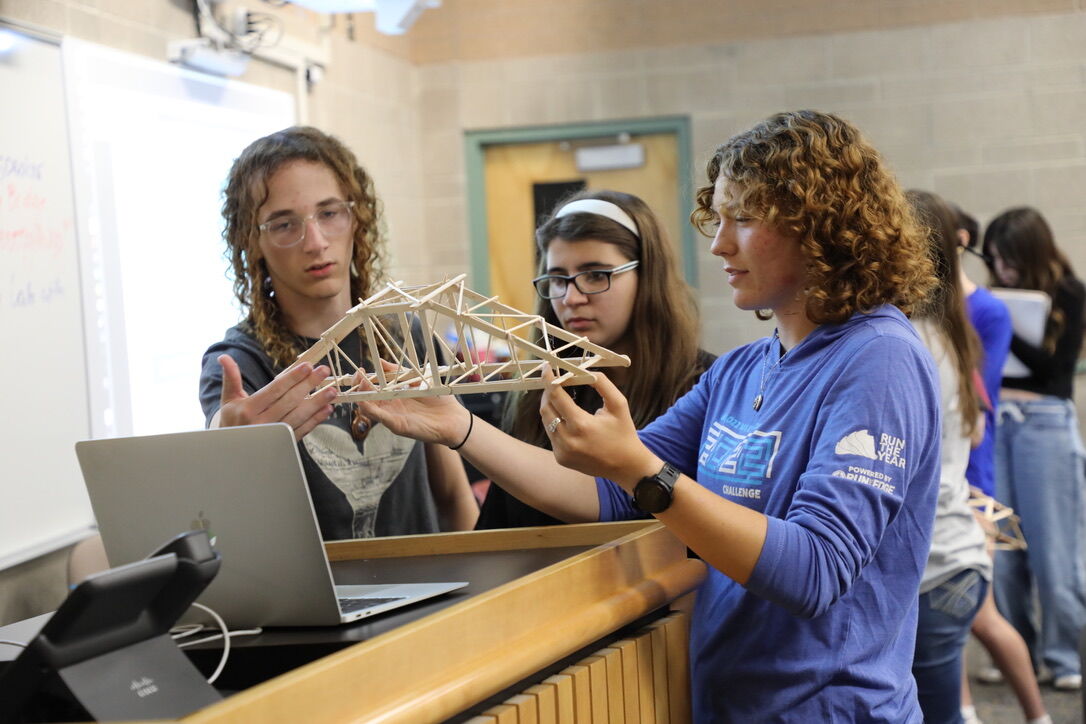 “Students weren’t just building bridges. They were learning how engineers think,” said Ms. Yurkiv. “They applied net force, tension and compression, and material elasticity, then defended their choices with evidence. When a design sagged or twisted, they treated it as data, not defeat, and adjusted. That’s the heart of engineering.”
“Students weren’t just building bridges. They were learning how engineers think,” said Ms. Yurkiv. “They applied net force, tension and compression, and material elasticity, then defended their choices with evidence. When a design sagged or twisted, they treated it as data, not defeat, and adjusted. That’s the heart of engineering.”
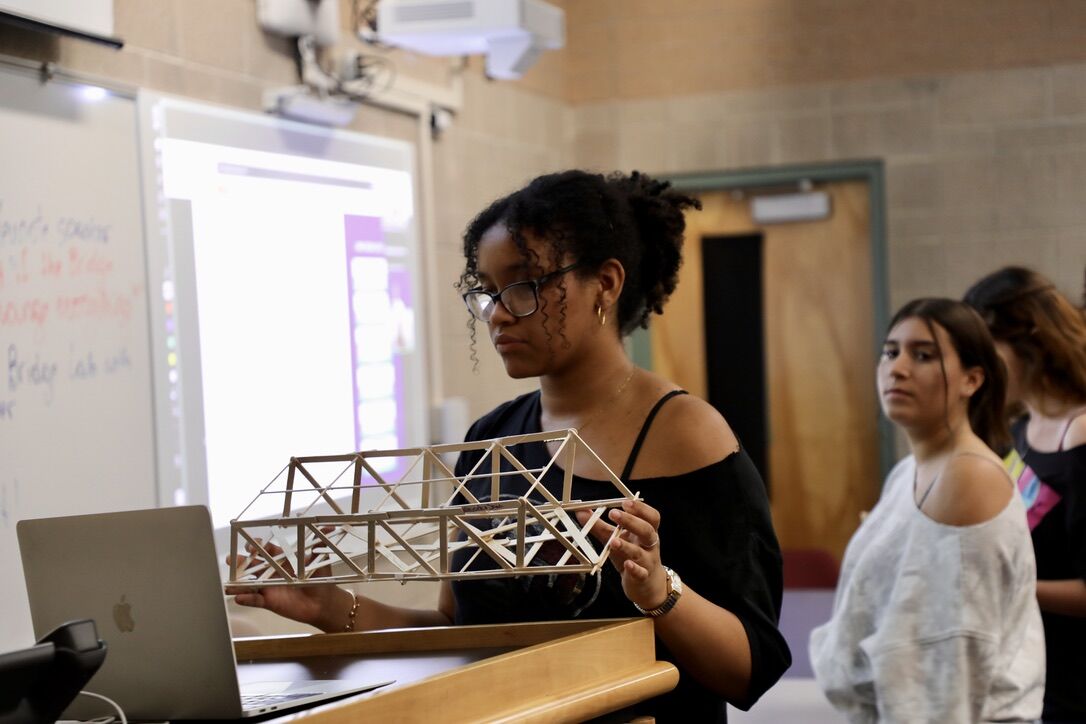 The LiveLab closed with an exploration of college and career pathways. Dawes and Fragoso-De la Paz described their routes through engineering programs and internships, shared advice on networking and student organizations, and connected the morning’s bridge work to broader fields, from civil and structural engineering to biomedical devices and biotechnology.
The LiveLab closed with an exploration of college and career pathways. Dawes and Fragoso-De la Paz described their routes through engineering programs and internships, shared advice on networking and student organizations, and connected the morning’s bridge work to broader fields, from civil and structural engineering to biomedical devices and biotechnology.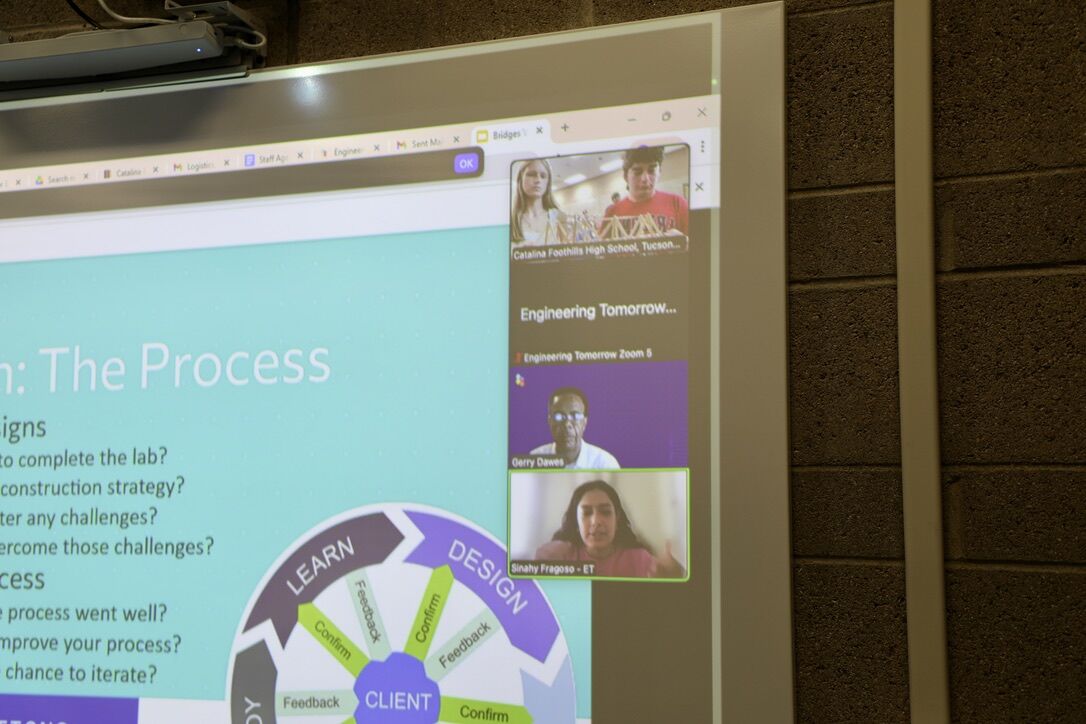
Physics: Applications of Biotechnology is one of CFHS’s most interdisciplinary offerings. The course fulfills a third-year science credit while aligning to Arizona CTE Bioscience technical standards. Students can earn OSHA 10 General Healthcare certification, qualify for the ADE Bioscience Certificate after the spring TSA exam, and will have an opportunity to pursue University of Arizona dual credit later this fall. The Bridges LiveLab showcased how those strands come together: rigorous physics, authentic engineering habits of mind, and tangible societal impact.
Teachers, do you have a lesson, activity, rehearsal, or lab that you would like covered? Contact Julie Farbarik at jfarbarik@cfsd16.org
 Additional settings for Safari Browser.
Additional settings for Safari Browser.


